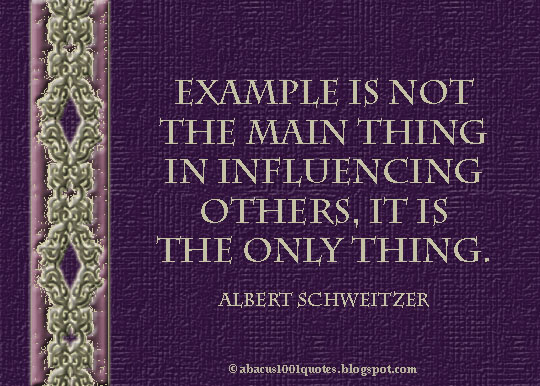7 Most Surprising Benefits of Learning Sign Language
So, you’re thinking about learning sign language? Or maybe you’ve just been curious like, what’s it really like to sign with your hands instead of speak with your mouth? Well, you’re in for something pretty amazing. Most people assume sign language is just for those who are Deaf or hard of hearing, but honestly? It’s so much more than that.
Learning sign language opens doors you didn’t even know were there. And no, I’m not talking about the basic stuff like “now I can talk to Deaf people” even though, yes, that’s a super important and beautiful reason to learn. I’m talking about the kind of life-changing, mind-expanding, connection-building stuff that hits you when you least expect it.
So grab a drink, get cozy, and let’s dive into the 7 most surprising benefits of learning sign language. Trust me, by the end of this, you’re gonna be wondering why they didn’t teach us this in kindergarten.

1. Your Brain Will Get a Major Workout (In the Best Way)
Let’s kick things off with your brain because wow, it loves sign language.
Learning any language is great for your mind, but sign language? It’s like CrossFit for your brain. You’re not just learning new vocabulary and grammar; you’re also using spatial awareness, visual processing, facial expressions, body language, and muscle memory all at once. It’s like juggling, dancing, and speaking a new language, all rolled into one.
Studies have even shown that using sign language activates both hemispheres of the brain more than spoken languages do. So if you’re looking to sharpen your memory, improve your focus, and maybe even ward off cognitive decline later in life, sign language is your brain’s new best friend.
2. It’ll Supercharge Your Communication Skills (Even With Hearing People)
This might sound a little backwards, but learning a non-verbal language actually makes you a better communicator with everyone.
Why? Because sign language makes you hyper-aware of things most of us totally overlook like tone, eye contact, facial expression, and body posture. You can’t rely on your voice to say, “I’m fine” sarcastically in sign language. You’ve gotta show it. And once you start paying attention to those cues, you’ll notice how much people say without saying a word.
It kind of rewires the way you read people. You’ll catch nuances in conversation better, become a better listener, and probably start noticing when your friends are upset even if they say they’re “okay.” It’s like unlocking emotional x-ray vision.
3. It’s a Lifesaver in Loud or Quiet Places
Ever tried talking in a super loud bar or at a music festival? You’re basically shouting “WHAT?!” every ten seconds. On the flip side, what about when you’re somewhere like a library or yoga class and you need to get someone’s attention without being that person breaking the silence?
Boom, enter sign language.
Once you know even a little, you can spell things out, sign key phrases, or just communicate silently like a boss. People in relationships who know sign often use it for those ninja-level secret convos across a room. Parents use it with their babies (yes, babies!) before they can talk. And healthcare workers, teachers, and even baristas use it in noisy environments every day.
Once you’ve got sign language in your toolbox, you’ll wonder how you ever lived without it.
4. You’ll Connect with an Entire Culture You Probably Didn’t Know Much About
One of the most eye-opening things about learning sign language is realizing that Deaf culture is its own rich, beautiful world.
We’re talking about history, humor, art, poetry, traditions, and a tight-knit community that you don’t just stumble into you earn your way in. And when you start learning to sign, you’re not just learning how to talk with your hands. You’re learning how to listen with your eyes and understand a worldview shaped by visual language.
It’s kind of like visiting a new country except the borders are invisible, and the only passport you need is a little curiosity and kindness. Once you start to “get it,” you’ll feel like you’ve discovered a hidden universe that was right there all along. And guess what? They’ve got some pretty awesome parties.
5. Kids Pick It Up Fast—and It Helps with All Kinds of Development
This one’s especially cool if you’ve got little ones in your life.
Babies can learn to sign before they can talk. Seriously. Around 6-9 months, they can start signing things like “milk,” “more,” or “all done.” That means way less crying and way more bonding. You’re giving them a voice before they even have words. How wild is that?
But it’s not just for babies. Kids who learn sign language often have better spelling, stronger reading skills, and more empathy for people with disabilities. It also supports visual learning and memory, which helps in school overall.
Whether you’re a parent, teacher, or just a cool aunt or uncle, signing with kids is fun, helpful, and surprisingly powerful.
6. It’s Seriously Fun—and Kinda Addictive
Okay, let’s talk real: learning sign language is just fun.
There’s something satisfying about finally getting a sign right, or being able to tell a whole story without saying a word. It feels a little like performing, a little like solving a puzzle, and a little like magic. People often say they “fall in love” with signing and it’s easy to see why.
Plus, once you start learning, you’ll find yourself practicing all the time. Watching TV and finger-spelling names. Signing along to music videos. Teaching your dog to sit in ASL (yes, people do this!). It sneaks into your life in the best way.
And let’s be honest: it looks cool. Not that you’re learning it to look cool, of course but hey, if people are impressed, that’s a bonus.
7. You’ll Be Ready to Help in Ways Most People Aren’t
Imagine this: you’re at a café, and someone Deaf is struggling to order. The barista looks panicked, the customer looks frustrated, and no one knows what to do.
But you do.
Even if you only know the basics like how to fingerspell, or sign “coffee” or “help” you can step in, bridge the gap, and make someone’s day a whole lot easier. That moment? That’s powerful.
Knowing sign language is like carrying around a secret superpower. You can’t fix everything, but in the right moment, you can make a real difference. And you’ll be surprised how often those moments come up at work, while traveling, even at your dentist’s office.
It’s one of the most underrated ways to show up for your community, and it doesn’t take much to get started.
Bonus: It Can Lead to Unexpected Career Paths (Seriously)
This might not be “surprising” if you’re already thinking about going into education, social work, or healthcare but even if you’re not, sign language opens career doors.
Interpreting is an obvious one, sure. But you could also work in advocacy, media, tech, event planning, or customer service, all with a sign language edge. There are even creative roles in theater, music interpretation, or television captioning. Not to mention you’ll stand out in any job that involves people (which is, y’know, most jobs).
Even something totally unrelated like duct cleaning services might benefit from having a signer on staff to better serve customers who are Deaf. Accessibility is more than just ramps and captions, it’s about people. And companies are starting to get that.
So, Ready to Start Signing?
Look, I’m not saying sign language will change your life… okay, actually, yeah, I am saying that. It’s one of those things that starts small with just a few signs here and there but then suddenly you’re thinking in a new language, making new friends, and seeing the world through a whole new lens.
You don’t need to be fluent overnight. Heck, you don’t even need to be “good” at it right away. Just being open and willing to learn is enough. Whether you pick it up through YouTube, an app, a local class, or just signing with a friend, you’re taking a step toward deeper connection, better communication, and a more inclusive world.
About the Blogger

Sara is an experienced financial expert who has worked as a manager in an export company for decades. She draws on this experience when writing her blog posts to assist others with running their own businesses.




